Click the Highlander for a high-res gallery
Toyota unveiled the second generation of their Highlander crossover last February at the Chicago Auto Show and it followed the all too familiar pattern of bigger, wider, heavier. Fortunately it didn't grow a whole size class the way some vehicles have. The conventional version of the Highlander went on sale during the summer while the hybrid launched in late October. Recently a new Highlander hybrid in the up-market Limited trim turned up in the AutoblogGreen garage just in time to provide transport to a string of holiday parties in Detroit.
The Highlander is the largest crossover in the Toyota lineup, almost matching the dimensions of the body-on-frame 4Runner. Unlike the 4Runner, the Highlander is a unibody configuration with a transverse mounted engine. The default configuration is front-wheel-drive but the test example had drive to all four wheels in combination with Toyota's hybrid synergy drive system. Read on after the jump to find out what the new Highlander is like to live with.
Toyota unveiled the second generation of their Highlander crossover last February at the Chicago Auto Show and it followed the all too familiar pattern of bigger, wider, heavier. Fortunately it didn't grow a whole size class the way some vehicles have. The conventional version of the Highlander went on sale during the summer while the hybrid launched in late October. Recently a new Highlander hybrid in the up-market Limited trim turned up in the AutoblogGreen garage just in time to provide transport to a string of holiday parties in Detroit.
The Highlander is the largest crossover in the Toyota lineup, almost matching the dimensions of the body-on-frame 4Runner. Unlike the 4Runner, the Highlander is a unibody configuration with a transverse mounted engine. The default configuration is front-wheel-drive but the test example had drive to all four wheels in combination with Toyota's hybrid synergy drive system. Read on after the jump to find out what the new Highlander is like to live with.
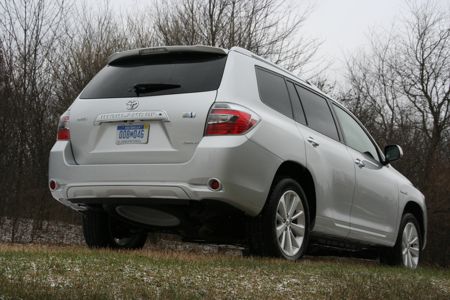
Like the original Highlander, the new one is derived from the Camry platform, this time the latest generation that debuted in 2006. Compared to the first-generation model, the new Highlander is 3 inches longer, 4 inches wider and 1 inch taller with a 3 inch longer wheelbase. All that adds up to 400 lbs of additional mass to cart around. The Highlander's closest competitor in terms of size and capacity is the Hyundai Veracruz which doesn't yet offer either a hybrid or diesel version although Hyundai has indicated they will offer the latter in a couple of years. Among domestics, the General Motors Lambda crossovers are over a foot longer than the Highlander and another 400 lbs heftier while the Ford Edge is 3 inches shorter and only has two rows of seats.
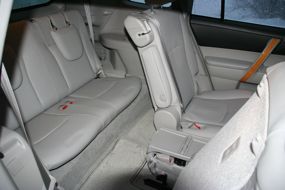
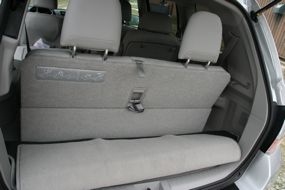
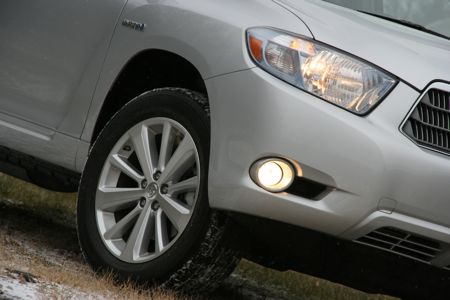
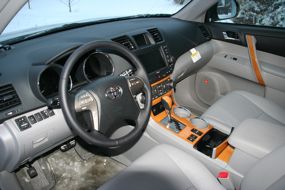
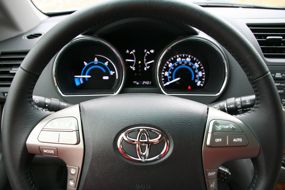
Unfortunately the front seats offer little in the way of of lateral support and as is too often the case the bottom cushions are too short. The steering wheel rim is also a bit too skinny for a comfortable grip. Thankfully the vehicle responses to the steering wheel inputs are much better the Saturn Outlook I drove last spring. The 5,000 lb Outlook felt ponderous in its dynamic responses even compared to the heavier Chevy Tahoe. In spite of its heft and height, the Highlander feels more responsive than the Saturn although not quite as good as the Grand Cherokee. The Toyota's ride and damping were excellent and it never felt floaty.
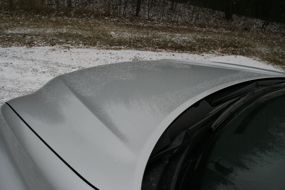
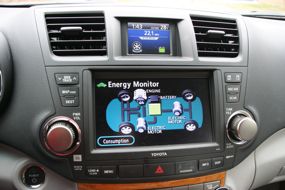
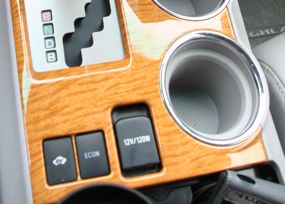
The hybrid power-train in the Highlander operates more smoothly than some other examples that have been evaluated in the AutoblogGreen Garage. The automatic start-stop of the engine was smoother than either the Saturn Aura or the Nissan Altima hybrids although not as seamlessly as the Two-Mode Hybrid Chevy Tahoe. One weak spot in the driving experience comes during low speed driving as the vehicle comes to a stop. The blending of regenerative and friction braking is pretty seamless and consistent throughout braking but at about 3-4 mph the deceleration suddenly increases and the vehicle pitches forward a bit.
The combined output of the 3.3L V-6 and electric motors is 270hp and 212lb-ft of torque. The power is on a par with gas-engined competitors like the Outlook and Veracruz and considerably better than the 4Runner. The torque, however, is on the weak side and lags behind the others. The 3,500 lb towing capacity matches the Veracruz but trails the Outlook and 4Runner which are rated at 4,500 and 5,000 lbs respectively. Where the Highlander really shines is in fuel economy, not so much in absolute terms but compared to similar vehicles.
The Edge, Outlook and Veracruz all have EPA combined ratings of 18mpg. When I tested an Outlook earlier in the year it averaged just over 17mpg. The Highlander managed a little over 22mpg which is well shy of the 26mpg (BTW, all EPA numbers are 2008 figures) but far better than others I've tested. It also beats the 19mpg from the Grand Cherokee diesel although that one used a full time four wheel drive system and and tires tuned more for off-road performance. If you really want a crossover and crave better mileage, the Ford Escape hybrid got over 30mpg during our test, but it's a much smaller vehicle.
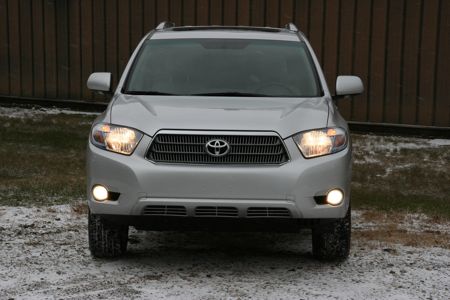
As usual a price must be paid for the additional utility of such a vehicle. That includes both the operating cost and up-front purchase price. This loaded AWD Limited ran $48,000 although a base AWD can be had for $40,000 and the FWD model starts at $33,700. If you need more interior space or more towing capability, a step up to the Chevy Tahoe hybrid might be in order. It considerably larger but the even the four wheel drive edition is rated at the 20mpg and all indications are that beating the EPA numbers in the real world is not uncommon. The base price of the Tahoe is about $4,000 more than the loaded Highlander but much of the same equipment is standard. We'll be finding out for ourselves in the near future. In the meantime, the Highlander is definitely the most efficient of the mid-large crossovers and provides good utility for those who need ample space for five plus two on occasion.
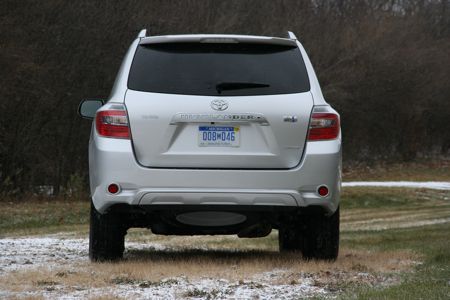
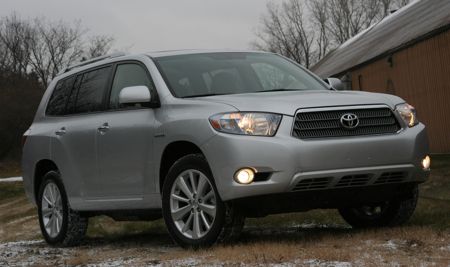



Sign in to post
Please sign in to leave a comment.
Continue